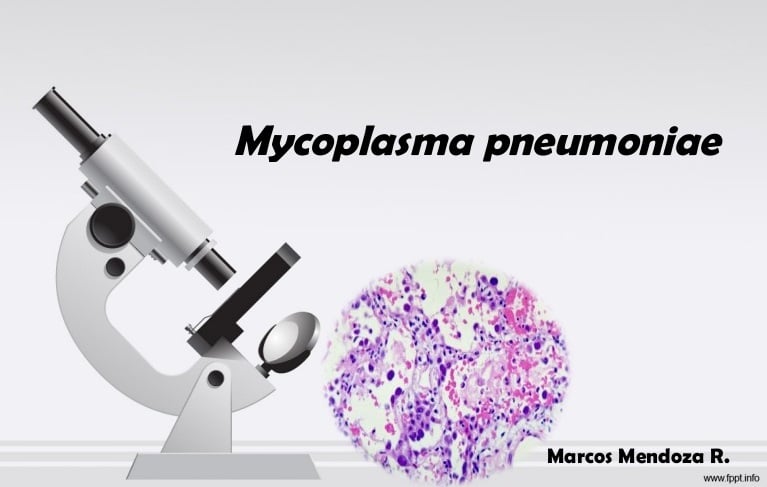Interesting Science Videos
Laboratory diagnosis of Mycoplasma pneumoniae
Specimen
- Ideal specimens are throat swabs and nasopharyngeal aspirates, lung biopsies, expectorated sputum.
- Washings are more reliable than sputum specimens because most infected patients have a dry, nonproductive cough and do not produce sputum.
Microscopy
- Test is not useful because organisms do not have a cell wall and do not stain with conventional reagents
Culture
- Primary isolation of Mycoplasma requires complex media, such as:
- Standard solid medium Containing PPLO agar with yeast extract, horse serum and penicillin.
- Standard liquid medium: Containing PPLO broth, glucose and penicillin and phenol red (indicator). M. pneumoniae growth is detected by turbidity and a color change (red to yellow) of phenol red indicator due to fermentation of glucose.
- SP-4 (Sugar- phosphate) medium: It is more complex and contains fetal bovine serum.
- The organisms grow slowly in culture, with a generation time of 6 hours and grow under both aerobic and anaerobic conditions.
- Colonies of M. pneumoniae are small and have a homogeneous granular appearance (“mulberry shaped”).
- Colonies can be examined by Hand lens or Dienes’ staining.
- Colonies of M. pneumoniae may be further identified by:
- Observation of colonies as most strains of M. pneumoniae produce hemolytic colonies.
- Hemadsorption test: M. pneumoniae agglutinates guinea pig red blood cells (RBC) and the colonies on agar adsorb RBCs to their surface.
- Tetrazolium reduction test: M. pneumoniae colonies reduce the colorless tetrazolium compound to red colored formazan.
- Growth inhibition test: the growth of M. pneumonia is inhibited by adding specific antisera.
Radiography
- The chest radiography in mycoplasmal pneumonia is highly variable but usually reveals a patchy infiltrate suggestive of bronchopneumonia.
Antibody detection
- Detection of antibodies directed against M. pneumoniae by complement fixation is the traditional serologic reference standard.
- Antibody IgM titers versus glycolipid antigens peak in 4 weeks and persist for 6-12 months.
- Acute and convalescent phase sera are necessary to demonstrate a fourfold rise in the CF antibodies.
- It has poor sensitivity and specificity.
- Alternative techniques with greater sensitivity include Immunofluorescence assays, Latex agglutination assays, ELISA using protein Pl antigens.
- Mycoplasma possesses certain heterophile antigens such as surface glycolipid haptens that cross react with ‘I’ antigens of the RBCs. This property can be used to detect heterophile antibodies in patient’s sera by using nonspecific antigens.
Antigen detection
- Direct immunofluorescence test: Detects the Mycoplasma antigens directly in the clinical specimens.
- Capture ELISA assay using monoclonal antibodies against P1 adhesin antigen.
Molecular technique
- Polymerase chain reaction–based amplification assays with excellent sensitivity is best choice.
- PCR assays can detect the presence of M. pneumoniae DNA in single specimen and will be positive earlier in the course of illness than serological tests.
- PCR targets M. pneumoniae specific 16S rRNA gene and P1 adhesin gene.
- Real-time PCR is useful for quantitative detection of M. pneumoniae.

Treatment of Mycoplasma pneumoniae
- Macrolides (Erythromycin), tetracycline (Doxycycline), and Fluoroquinolones (levofloxacin, moxifloxacin and gemifloxacin) are effective against M. pneumoniae caused infections, although the tetracyclines and fluoroquinolones are reserved for use in adults.
- Newer macrolides, such as clarithromycin and azithromycin, and the newer fluoroquinolones, are highly active in vitro and certainly have a place in treatment, although macrolide resistance may sometimes be an issue.
Prevention and control of Mycoplasma pneumoniae
- Isolation of infected people could theoretically reduce the risk of infection.
- Personnel hygiene and sanitation
- No vaccine is currently available to prevent the mycoplasmal infection.

May you help me by providing culture protocol of Mycoplasma gallisepticum and M. synoivie. It is very important to me.